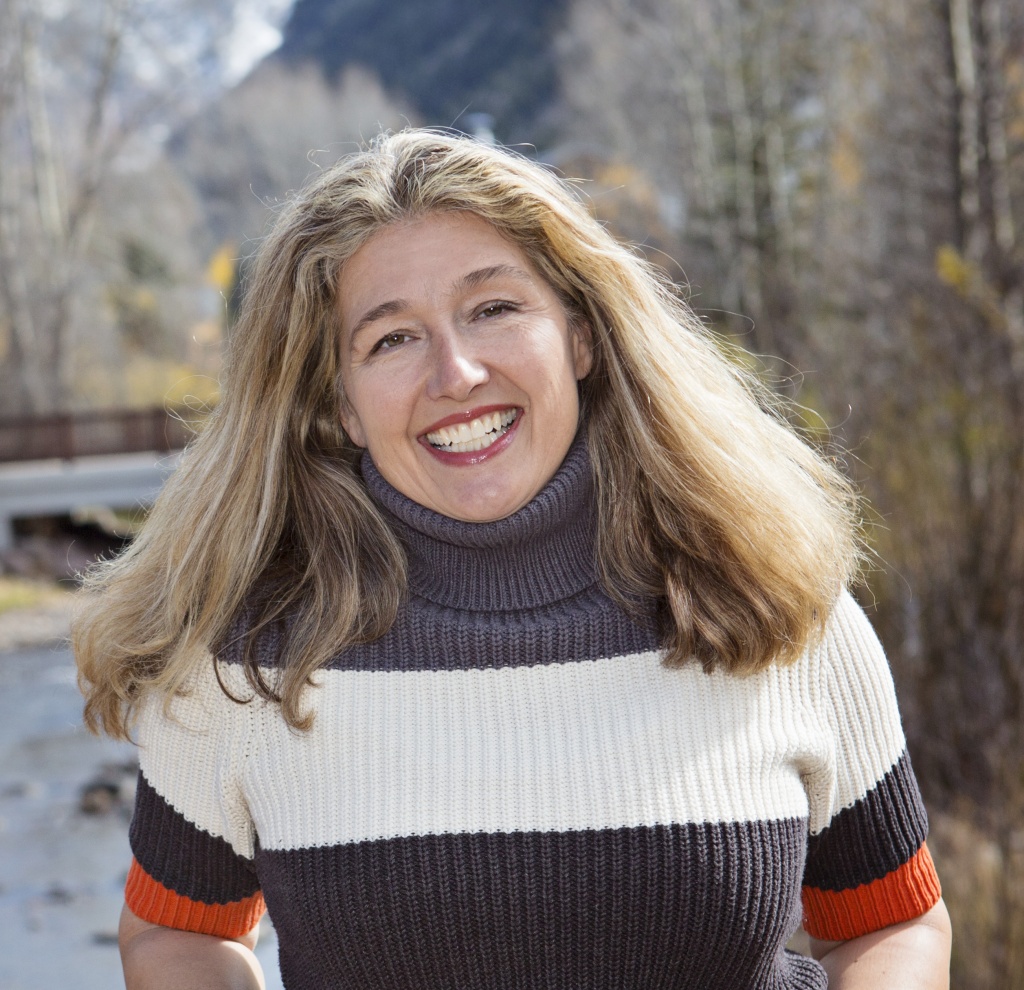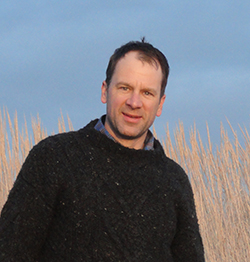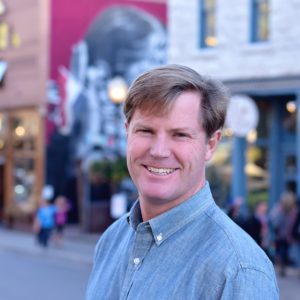
10 Mar Pinhead: New Climate Institute Competes for Foundation’s $50K Innovation Prize
Though written in 2007, his words ring true, perhaps truer, today as we deal with a planet with a life-threatening disease.
“There are incredible numbers of people around the world filled with love thy neighbor and for the earth who are resisting, remaking, restoring, renewing, revitalizing,” said environmental activist Bill McKibben in an endorsement of Paul Hawken’s book “Blessed Unrest.”
And some of those activists are locals.
Last month, the Telluride Foundation chose three finalists out of the eight heavyweights who applied to compete for its brand new $50,000 Innovation Prize. An initiative of Telluride’s very own Pinhead Institute, the brand new Pinhead Climate Institute, is the only regional contender. The nonprofit long associated with educating primarily young people about the natural world has pulled on its big boy pants, proposing to take the lead in identifying strategies to offset carbon emissions in and around Telluride until cleaner technologies can be implemented. At this special and very important event, the community is asked to weigh in and help choose the winner. Final pitches take place at the Elks Lodge, March 15, 4-6 p.m. If you plan to attend, RSVP to vista@telluridefoundation.org.
“A couple of dreams have persisted throughout my life: living with my family in Telluride and demonstrating to the world that environmental preservation and economic growth are mutually beneficial. Through the innovative support of the Pinhead Institute and the Telluride Foundation our community has the opportunity of a lifetime. Climate change threatens the health of our community and the health of our planet. Through the Pinhead Climate Institute and the Telluride Foundation Innovation Grant we have an opportunity to assume a leadership role, locally and globally. This is an opportunity to demonstrate that Telluride values climate science, rural economic development, and a firm price on carbon emissions,” said Dr. Adam Chambers, Scientist and Co-Founder of Pinhead Climate Institute. “Telluride’s economic health is very climate dependent: we need all four seasons and we live in a very fragile alpine ecosystem. Too much carbon pollution in the atmosphere threatens our fragile environment and jeopardizes our economy. Our greatest risk is ‘inaction’ and ‘inaction’ is not a character trait of Telluride, the Pinhead Climate Institute, nor Telluride Foundation. We hope the community will join us for the meeting on March 15 and we certainly look forward to working together on local climate solutions.”

Sarah Hobrooke, executive director, Telluride’s Pinhead Institute and a driving force behind Pinhead’s new Climate Institute. Matching words with affirmative action.
Liz Purchia Gannon is a founder and partner of Riff City Strategies. She was previously the head of communications at the U.S. Environmental Protection Agency. A recent article (published March 6) written by Liz for Grist, talks about “How to push climate action forward in the Trump era.”
I spent the past eight years communicating the policies and priorities of President Obama — on his campaigns, at the U.S. Department of Agriculture, and at the U.S. Environmental Protection Agency. Talking about climate impacts and public health was a huge part of my work, and it was all-consuming. White House staff suggested I cancel my bachelorette party, which was scheduled for the weekend before the launch of the Clean Power Plan. I got married two weeks after visiting Fukushima, and announced the VW emissions scandal a week later. I delayed my honeymoon until after the Paris climate talks. But it was worth it, because the work we were doing was so important.
Then came the shock of Nov. 8. Washington, D.C., didn’t see it coming, and the environmental community in particular was blindsided. We hoped the Clinton administration would take President Obama’s strong environmental legacy and build on it, leading the U.S. and the world toward a clean energy economy. People were betting on what actions President Clinton would take first. Budgets were prepared, announcement rollouts were planned. But the election sent everything into a tailspin.
Now, as environmental and public health advocates plan for the next few years, they’re operating in a completely different landscape. But I think lessons I learned in the Obama years can be helpful for those communicating about climate change in the Trump era.
Here are a few of them:
- Be positive. Talking about doomsday scenarios won’t get you anywhere. A story about how half a million people are going to die by 2050 from climate change may be accurate, but it does nothing except terrify people before they move on to the next scary headline. Americans want healthy places to live, work, and play, so talk about how climate action leads to healthy communities. Highlight success stories, like cities that are benefiting by embracing clean energy. Let’s not give climate skeptics more ammo to say we’re just a bunch of alarmists.
- Emphasize that climate action = jobs. Some 374,000 Americans work in solar power generation — more than in generating electricity from coal, oil, and gas combined. More than 100,000 people work in wind power in the U.S., and last year, wind turbine technician was declared the fastest-growing job in America. Renewable energy development puts people to work in areas with high unemployment. Talk about how clean-energy businesses are creating new economic opportunities.
And back home, check out what the Pinhead Institute is up to now to make a sustainable difference in our little corner of our Pale (and growing paler) Blue Marble.
Pinhead is a Smithsonian Affiliate based in Telluride which strives to promote science-education both locally and globally. Through the development of the Pinhead Climate Institute, its existing mission is expanded to enable education, technology development, innovative partnership opportunities, and actions that reduce greenhouse gas (GHG) emissions and enhance carbon sequestration in the terrestrial landscape and to rapidly bring attention to near-term global climate change solutions on the U.S. landscape.
Such as the project submitted to the Telluride Foundation, a market-based solution to neutralize local carbon consumption.
Specifically. the Pinhead Climate Institute plans to reduce Telluride’s carbon footprint one project at a time by creating a local carbon trading market, working with local and regional farmers. Again, the nonprofit plans to select projects that can benefit from Pinhead’s strong analytical capabilities and identify strategies to offset carbon emissions until cleaner technologies can be implemented in the region. In that way, Pinhead hopes to lead our climate-dependent community towards a future in which economic growth is decoupled from fossil fuel emissions.
In the 1970s, when Telluride was considering the ski resort, long-time resident and county municipal judge Mrs. Mary Ellen Inama was quoted in “From Pick to Powder” as saying “We must grow, but we must control our growth.”
Her words still ring loud and true today: The Telluride community must continue to grow, but at the same time reduce our carbon footprint, demonstrating leadership in our state, our country, even in our world.
Another glimpse over our shoulders into Telluride’s history reveals that the original Galloping Goose went into service on June 1. 1936 – emitting carbon into the atmosphere ever since.
The Pinhead Climate Institute proposes to neutralize annual carbon consumption of the Goose bus system by purchasing carbon offsets, jump-starting an initiative to reduce our community’s carbon footprint.
Once the team addresses Goose emissions, the hope is to move forward and work with the Towns of Telluride and Mountain Village and San Miguel County to deliver strategies that, again, decouple emissions from economic prosperity.
Over time, the team plans to demonstrate reductions in emissions that complement the Towns’ Climate Action Plan also address global climate change, promote rural economic development, and expand its impact far beyond the Goose bus system.
Also, according to Pinhead’s website:
Improving Climate Resilience and Soil Health is a topic that is emerging as a near-term climate solution, with proponents ranging from the United Nations Food and Agriculture Organization to non-governmental organizations like the Natural Resources Defense Council. For its part, the Pinhead Climate Institute focuses on educating rural Americans about the potential for moving existing carbon stocks out of the atmosphere and into carbon-depleted soils.
Telluride provides the Pinhead Climate Institute with the opportunity to interact closely with three Colorado-based entities: the Natural Resources Ecology Laboratory at Colorado State University; the National Center for Atmospheric Research; and the National Renewable Energy Laboratory. The closest interactions and partnerships will be with Colorado State University and Professor Keith Paustian’s team of world-renowned experts. Dr. Chambers and Dr. Paustian have worked together and collaborated on numerous efforts, and the Pinhead Climate Institute will leverage this relationship and strive to develop numerous other domestic and international partnerships that help educate rural citizens of near-term climate change solutions.
So who again is leading Pinhead’s new initiative, I mean who besides the nonprofit’s fearless leader, executive director Sarah Holbrooke?
More about the team.
Adam Chambers, Ph.D., Scientist and Co-Founder, Pinhead Climate Institute:

Dr. Adam Chambers is a scientist who splits his time between Portland, Ore. and Telluride. In Telluride, he works closely with the Pinhead Climate Institute to educate young scientists and implement town-level climate actions that also encourage rural economic development. Over the past two decades, Dr. Chambers’ project work has focused on the applied sciences and reducing atmospheric pollutants (air pollutants and greenhouse gases).
He is currently working to implement conservation measures on managed agricultural lands that reduce greenhouse gas emissions and enhance carbon sequestration, providing an emerging carbon market opportunity for US landowners and agricultural producers.
Chambers received his Doctorate from the Technical University of Vienna (Austria), Master of Environmental Management from the Yale School of Forestry and Environmental Studies, and his B.Sc. from Murray State University in Kentucky.
AND…
Chris Arndt, Co-Founder, Pinhead Climate Institute:

Chris Arndt began his career in 1992 as a Research Assistant at Environmental Risk Sciences, Inc., a consulting firm based in Washington D.C. In 1994, he moved to New York City and from 1995 to 2010, he worked as an equity analyst, portfolio manager, and a partner in the firm Select Equity Group, Inc.
Arndt contributed to the significant growth of the firm over that 15-year period. As an equity analyst, he focused mostly on life science and healthcare companies.
In 2010, Arndt left Select Equity Group, Inc. to turn his attention to public policy issues, such as accelerating the adoption of clean energy. He has served as Director of the New York Chapter of Environmental Entrepreneurs (E2) and currently serves on the board of the NRDC Action Fund.
At Wesleyan University, Arndt studied economics, history, and political theory, graduating with honors in 1992.
In 2016, Mr. Arndt wrote his first book:” The Right’s Road to Serfdom.”
Support for Pinhead helps guarantee a greener future in the Telluride region.


Sorry, the comment form is closed at this time.